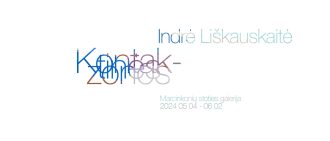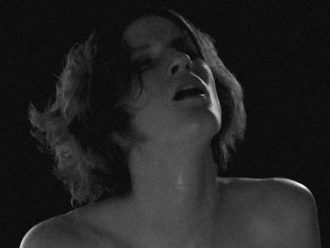The group exhibition Ida ots(as)? / east end(s)? is dedicated to exploring the current situation regarding Eastern-European identity. Eight Estonian artists will present their works in diverse mediums, and thereby create a complex offering for an open dialogue. The exhibition re-examines and reflects on the socio-psychological experiences of Eastern Europeans and the international image of Eastern Europe.
Historically, Estonia was ruled by different countries, including Sweden, Germany, Denmark and the Russian Empire, until 1918 when the Republic of Estonia was first established. Following a couple of decades of independence, Estonia was annexed by the Soviet Union, regaining independence in 1991. Back then, the yearning for freedom was so strong, that this shared feeling of endurance conceived a common saying: “to be willing to eat potato peels” – that estonian people would endure absolute poverty to attain freedom.
After securing statehood, the government strove for the country to become a member of the EU, which was achieved in 2004. Since then, the public agenda has been to add Estonia to an already existing image of the Northern European countries and promote Estonia as a digital success story and a tech-savvy nation (even though the technology industry covers 2.7% of the labour market). Alongside the rapid development, Estonia has been grappling with severe socio-economic problems, such as the biggest gender pay gap in the EU, a quarter of the population living in relative poverty, and issues related to the integration of nonEstonian speaking communities.
Estonia is in the process of finding its identity as a progressive nation with roots in folklore, whilst having to accept the disruption of the time under Soviet occupation. Yet, the process of redefining identity does not come with stability and it is not understood unanimously, because of economic inequality, and a number of historical traumas. In order to be overcome, these traumas need a collective sense of a strong social structure, which is formed by the state and its citizens. At the same time, the nation needs to open up to the global community to evolve and ensure its continuation. Thirty years have not been enough to make this transition.
Existing tensions generate both inner conflicts and creative impulses. Artists and their media present different perspectives to address the issues of identity, which is the key focus of this exhibition. The title entails socio-geographic, temporal, and psychological aspects of borders. Is Estonia the final frontier of “the East”? How is Estonia’s identity shaped by inner and outer expectations? Do we need to pursue the set of economic, societal and developmental standards of Western Europe or do we have the backbone to define a new path? The exhibition doesn’t just invite audiences to accept their complex identity, but will also offer the possibility to find a new personal interpretation.
This exhibition has a multimedia approach and a vivid mixture of artists realizing an intergenerational dialogue. Some unravel the beauty and pain of an Eastern European identity with a touch of irony in comic-like paintings or videos that reevaluate the past. Others take a frank and critical approach to Russian integration in post-Soviet society and on accepting one’s multicultural identity in Estonia. The show further entails poetic works that interpret identities in installation-based experiments, where fabrics with text and the use of biological materials are combined.
Ida otsa(s)? / east end(s)? is held in a progressive district – the former industrial area of Kopli, which is also on the path to redefining its image. The location and the exhibition mirror each other’s characteristics by showing historical ambiguity, and both move towards a new identity.
Artists: Alexei Gordin, Madlen Hirtentreu, Flo Kasearu, Sandra Kosorotova, Tanja Muravskaja, Marko Mäetamm, Evi Pärn and Tanel Rander.
The exhibition takes place in Põhjala Tehas at hangar no 5. (Marati 5), Tallinn
13–30 August. Take the trams no 1 or 2 direction Kopli from the city center to Marati station.
Opening event 13 August at 7PM
Panel discussion 18 August at 6PM
Performance night 19 August at 6PM
Curatorial tours in Estonian on Tuesdays (18, 25 August) 5PM
and Sundays (16, 23, 30 August) 1PM.
Tours in Russian on Wednesdays (19, 26 August) at 5PM
and Saturdays (15, 22 and 29 August) at 1PM.
Tours in English on Thursdays (20, 27 August) at 5PM
and Saturdays (15, 22, 29 August) at 2PM.
Curator: Maria Helen Känd
Project manager: Minna Triin Kohv
Visual identity: Henri Kutsar
Sponsors: Eesti Kultuurkapital, Tallinna linn, Põhja-Tallinna linnaosa, Tallinna Kultuuriamet, Eesti Kunstiakadeemia / Estonian Academy of Arts
























